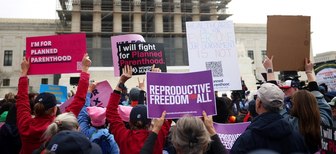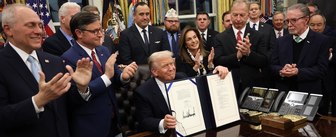YouGov asked Americans to rate how liberal or conservative each Supreme Court justice is – and overall people get it very close to the mark
The political divisions within the Supreme Court often reflect the political divisions in the American people – and the reputation of the nation's highest court changes depending on whether its latest ruling benefits liberal or conservative causes.
These rulings usually pit the same four justices – John Roberts, Antonin Scalia, Samuel Alito and Clarence Thomas – on the conservative side against the same four justices – Ruth Bader Ginsburg, Sonia Sotomayor, Elena Kagan and Stephen Breyer – on the liberal side, with Anthony Kennedy as the deciding “swing vote”. More detailed analyses (such as the one recently provided by the New York Times The Upshot) show that the votes of Kagan, Sotomayor and Ginsburg in particular have tended to be the most liberal, while those of Alito and Thomas have been the most conservative.
In the latest YouGov/Economist poll, we asked ordinary Americans to rate each justice on a five-point (0-4) scale ranging from “very liberal” to “very conservative” and gave them a score based on based on their ratings. Remarkably, taking an average of these scores gives an overall score of 2.01, suggesting a court that, taken as a whole, is more or less politically balanced. This isn’t to say Americans think the justices are moderates as individuals, of course. Americans see the court as polarized, with Sotomayor, Kagan and Ginsburg furthest to the left and Scalia and Thomas furthest to the right.
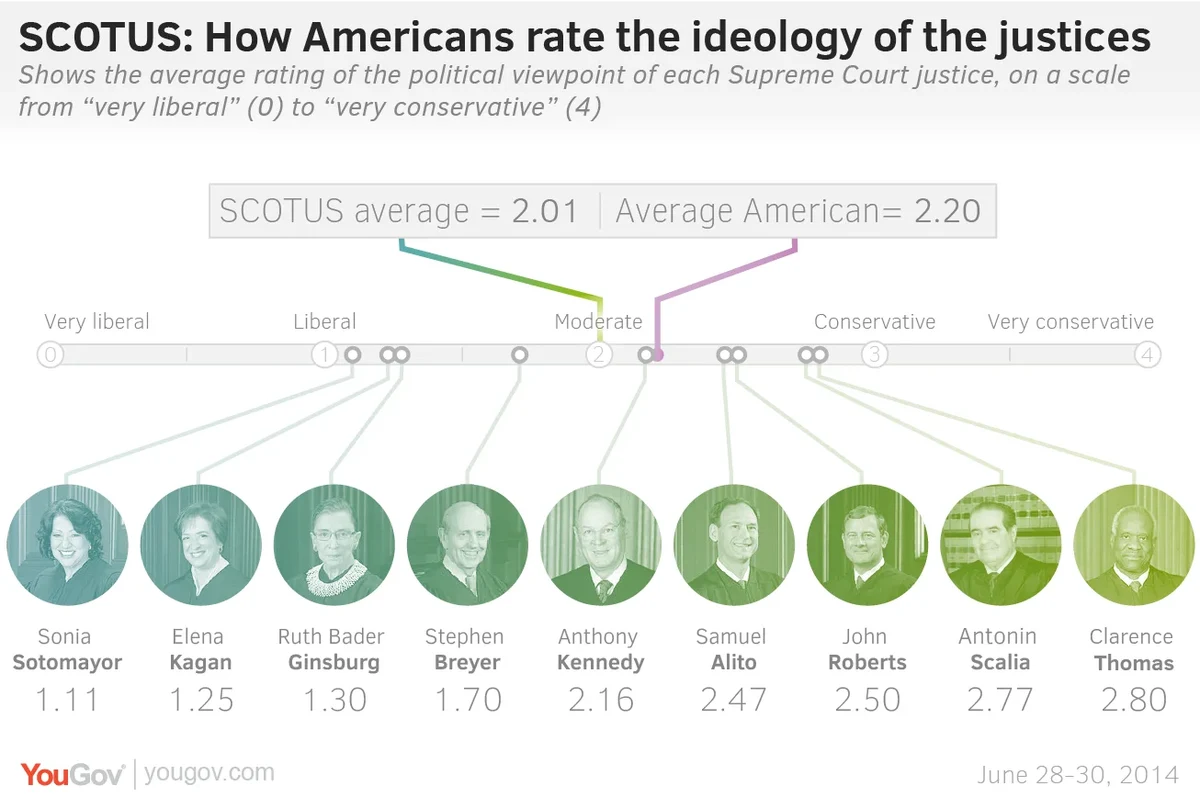
That none of the justices get less than a 1 or more than a 3 does not mean nobody puts them on the far ends of the scale. But these answers get averaged out, partly because there is ideological variation in the respondents themselves. Conservative respondents are less likely to describe a justice as very conservative when compared to liberal respondents and vice versa.
When asked to describe their own political viewpoint using the same five-point scale, 23% of Americans rate themselves as liberal or very liberal, 35% as moderate and 41% as conservative or very conservative, which works out to an average of 2.2, or just right of center – and the Supreme Court average. Looking at individual justices, self-described political leanings in the country as a whole are closest to Kennedy (2.16), the court’s usual tiebreaker.
Americans’ ratings of the justices are also reasonably accurate when compared to the analysis provided by The Upshot, which measured the percentage of votes by each justice that were “liberal”. The order of each justice in our ranking is correct except for two liberal justices, which are swapped (Kagan and Sotomayor, though they were close anyway) and two conservative justices, which are swapped (Scalia and Alito, who should technically be slightly to the right of Thomas). Of course, the accuracy of the public as a whole is different than the accuracy of individual respondents – not many Americans may get it right on their own, but individual errors have mostly been averaged out.
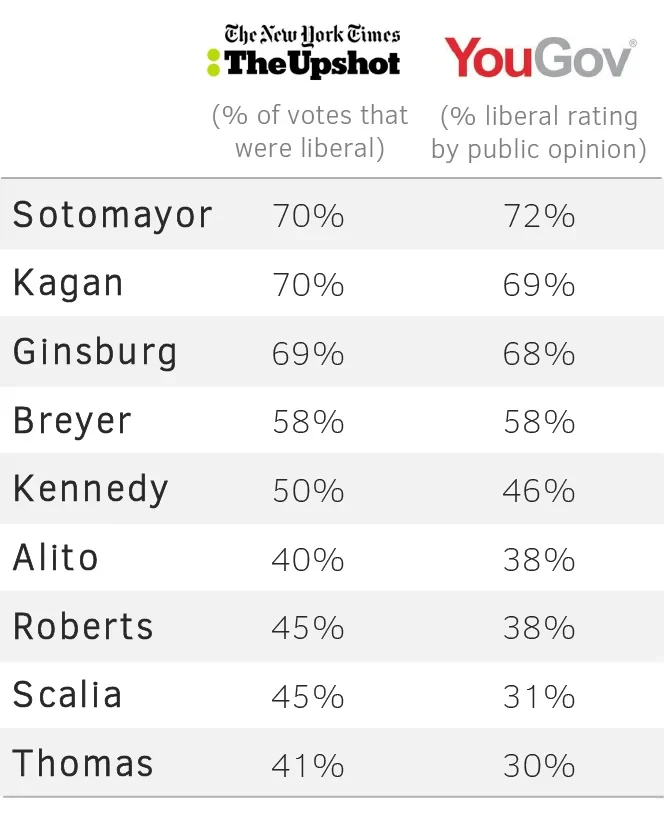
Converting our 5-point scale to one based on a percentage (with 100% now equal to a zero on the scale) highlights the similarities and the differences. In short, Americans appear to slightly overestimate how conservative the court is, particularly justices Thomas and Scalia relative to the other justices. Alito is correctly placed relative to the liberal justices, but should be to the right of the other conservatives.
Why the discrepancies? One possible explanation is notoriety. Not only is Scalia a Reagan appointee and the longest-serving Supreme Court justice, but he has been known, even criticized, for fiery dissents from the bench and outspoken conservative political views. Alito is a Bush (43) appointee, but is one of the justices Americans are least familiar with.
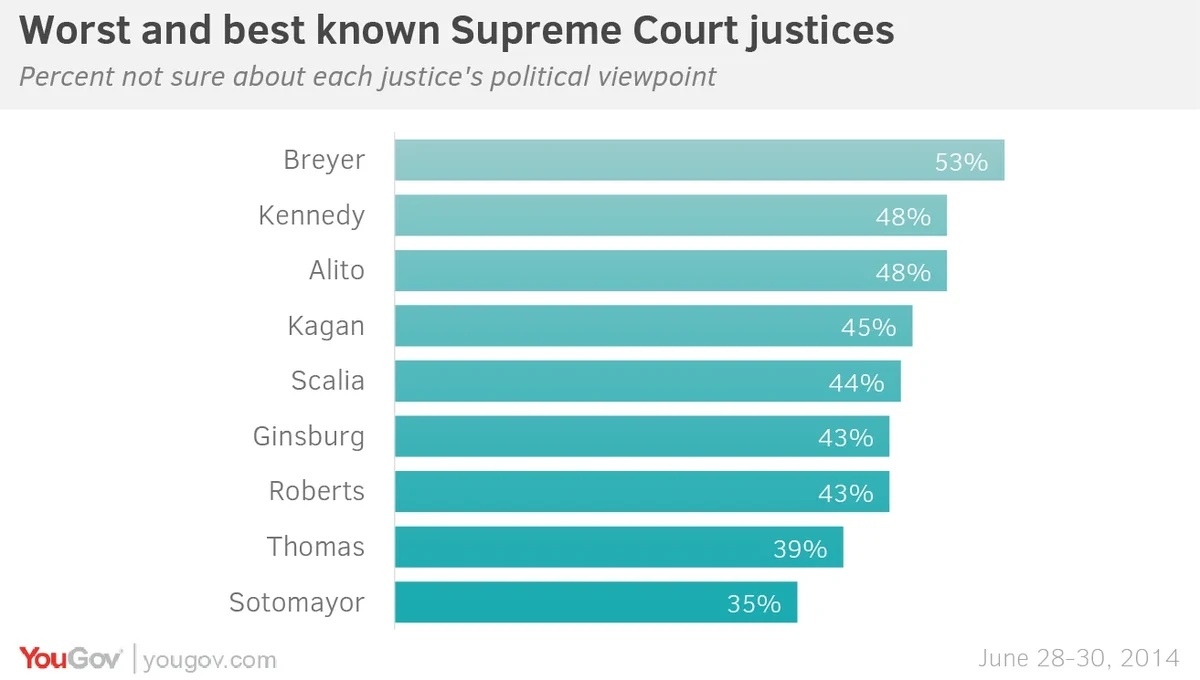
By contrast, Thomas rarely speaks from the bench, but his confirmation in 1991 was marked by a scandal. Fewer Americans were “not sure” about Thomas’s ideology (39%) than any other justice except Sotomayor (35%), who recently finished a book tour and was appointed in 2009.
Full results can be found here.
Economist/YouGov poll archives can be found here.
Correction: An earlier version of this article described Samuel Alito as a Bush 41 appointee. He is a Bush 43 appointee.




